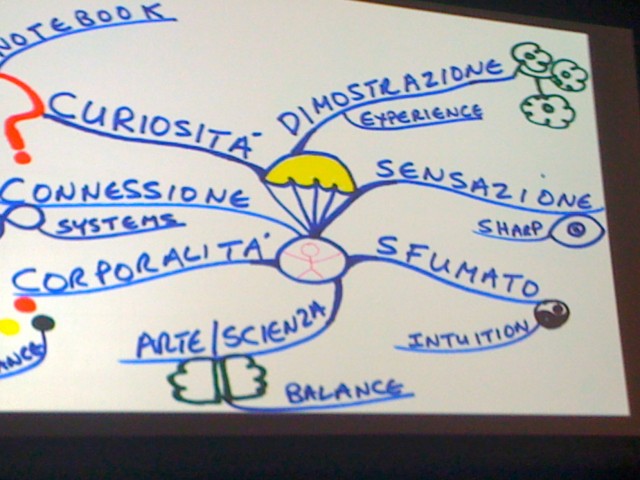
Your company is expanding into India, and you’ve got to hire a CEO to head up the new branch. What qualities do you look for?
Do you select the candidate with the solid academic credentials, proven track record and cautious yet consistently successful approach? Or do you go with the wildcard—the rogue leader who questions authority, circumvents convention and takes risks, even though they may fail?
A recent Harvard Business Review article by J.P. Flaum and Becky Winkler says you should go with the rebel.
Why? Because the sure thing may not turn out to be so sure when thrown into an unfamiliar context. Leaders who easily achieve success with known variables may find their formulas don’t work so well when those variables change. Unaccustomed to failure, they may react defensively, sending the company into a tailspin while struggling to cope with the unexpected.
The wildcard, on the other hand, embraces challenge. She’s not afraid to take strategic risks because she doesn’t fear failure—instead of crumbling, she bounces back stronger, learning from her mistakes and adapting accordingly. She may be harder to govern, but she listens to her team, reflects, and recalibrates when circumstances demand—and this learning agility is the bellwether of success.
Traditionally, corporations have opted for the kowtower over the renegade—a pattern that frequently produces catastrophic results.
Case in Point: Apple
Take Apple, for example. Go back to 1985, when the Board is faced with a choice between Steve Jobs and CEO John Sculley, who had been specifically directed to “contain” Jobs and his cavalier tendency to lavish resources on new product ideas. The Board chose Sculley, and 13 years later, Sculley left the company $200 million in debt. Sure, Apple still had $2 billion in cash, but their reputation was on the decline along with profits, and it wasn’t until they brought Jobs back in 1997 that Apple’s brand, stock prices and profitability began to soar again.
What the Board had feared in Jobs is precisely what made him such a triumphant leader: he was daring, original, flexible and resilient—in other words, he was learning-agile.
What Is Learning Agility?
Researchers at the Center for Creative Leadership and Teachers College, Columbia University say learning-agile leaders are “continually able to jettison skills, perspectives and ideas that are no longer relevant and learn new ones that are.”
Flaum and Winkler summarize the findings on learning agility as “a mind-set and corresponding collection of practices that allow leaders to continually develop, grow and utilize new strategies that will equip them for the increasingly complex problems they face in their organizations.”
The researchers found that the single defining characteristic of non–learning-agile individuals is defensiveness. People who fear change, resist new experiences and respond negatively to critiques or challenges lack the resilience necessary to grow and, subsequently, learn.
Learning-agile leaders, on the other hand, solicit feedback and evolve to integrate what they’ve learned. This kind of emotional intelligence requires listening skills, empathy, imagination and humility.
See the white paper Learning About Learning Agility for more details.
Key Behaviors
Four key behaviors are associated with learning agility:
- Innovation: People who think different are the revolutionaries who will change the course of your company’s history. You want the wave-makers and the earth-shakers—they’re the ones who are going to launch your organization to success.
- Performance: The learning-agile cope marvelously with stress, adversity and uncharted territory. They don’t shatter when failure occurs but instead respond with elasticity and grace, deftly changing tack and perfecting a strategy based on what they’ve learned.
- Reflection: This, again, is where emotional intelligence comes in, specifically self-awareness, according to studies by Green Peak Partners identifying this as the top predictor of success in executive leaders. This quality enables the learning-agile to self-assess, seek feedback and modify their behavior.
- Risk: Learning-agile individuals don’t take foolhardy risks, but they also don’t let fear or caution prevent them from seizing opportunity. They welcome new experiences and constantly seek out ways to stretch themselves and their team. They court failure, knowing they will always learn from it and do better in future. Like the phoenix rising from its ashes, the learning-agile person grows more confident, resilient and astute with each stumble.
The Connection Between Emotional Intelligence and Learning Agility
In their 1990 article “Emotional Intelligence,” Peter Salovey and John D. Mayer define EI as “the subset of social intelligence that involves the ability to monitor one’s own and others’ feelings and emotions, to discriminate among them and to use this information to guide one’s thinking and actions.”
Flaum and Winkler suggest self-monitoring and managing your emotions both require learning agility, making it crucial to emotional intelligence. They also connect it to superior listening skills.
Do You Want to Become More Learning-Agile?
A coach can help you learn how to innovate, perform, reflect and take risks that will stretch you as well as showing you how to shed obstructive qualities like defensiveness.
Contact Chris Cook at 541.601.0114 or chris@capiche.us to explore how her leadership coaching services can hone your learning agility, emotional intelligence and effectiveness as both a leader and a human being.



 Have you ever endured a team meeting that went from productive to disastrous? Where the people from the departments that make up the team just didn’t seem to get it? They fought with each other, protected their own departments and were distracted by a bazillion side issues and personal problems? Did you drift off, thinking of Elvis Costello’s plaintive cry, “What’s so funny ‘bout peace, love and understanding?” Does it make you want to go back to the good ol’ days where each department did its job and didn’t have to worry about what was going on in other areas of the organization?
Have you ever endured a team meeting that went from productive to disastrous? Where the people from the departments that make up the team just didn’t seem to get it? They fought with each other, protected their own departments and were distracted by a bazillion side issues and personal problems? Did you drift off, thinking of Elvis Costello’s plaintive cry, “What’s so funny ‘bout peace, love and understanding?” Does it make you want to go back to the good ol’ days where each department did its job and didn’t have to worry about what was going on in other areas of the organization?
 What an incredible week as I attended the International Coaching Federation’s international conference! The theme was Playing to the Edge. With more than 1,000 coaches from around the world, we gathered together to continue our studies in the art and science of coaching and share perspectives on how we can help businesses and employees achieve their potential in our global economy.
What an incredible week as I attended the International Coaching Federation’s international conference! The theme was Playing to the Edge. With more than 1,000 coaches from around the world, we gathered together to continue our studies in the art and science of coaching and share perspectives on how we can help businesses and employees achieve their potential in our global economy.



